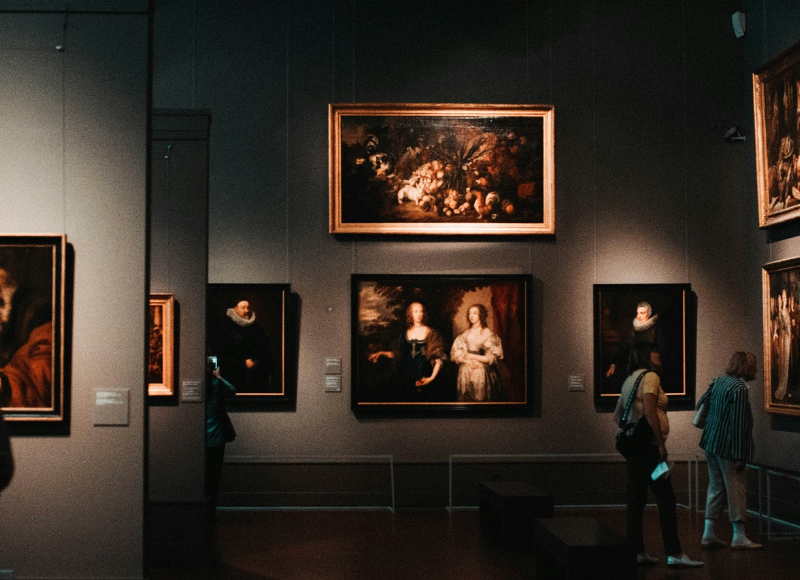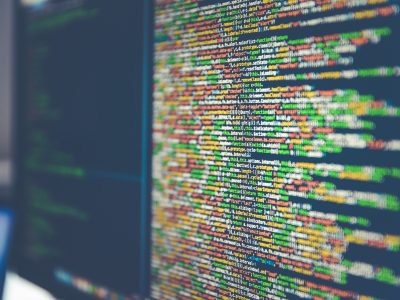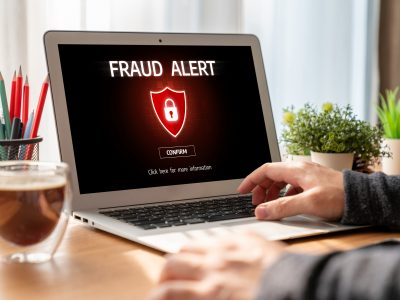The art world—comprising artists, collectors, galleries, museums, auction houses, and related intermediaries—has traditionally been viewed through prisms of aesthetics, culture, investment, and heritage. Beyond the aesthetic allure and intellectual discourse, it is a global market worth billions, operating with an intricate web of transactions, logistics, and legalities.
Why is this a Risk Management challenge?
The art world presents a complex landscape of hidden risks for several reasons:
- Unlike regulated financial markets, art transactions often occur privately with little transparency. The lack of standardisation in valuation, documentation, and provenance creates uncertainty.
- Artworks are typically high-value, unique, and irreplaceable. Their loss or damage results not only in financial implications but also cultural and emotional impact.
- Art often moves across borders, engaging different legal regimes, customs protocols, and ownership laws. Issues around art forgery, provenance, restitution, sustainability, and social responsibility now have reputational and regulatory consequences. This exposure is difficult to navigate without expert guidance.
- The advent of NFTs (non-fungible tokens), virtual exhibitions, and digital marketplaces introduces new types of risks such as cyber fraud, intellectual property theft, and contract vulnerabilities.
Identifying risks in the Art Industry
To effectively manage risk in the art world, stakeholders must prioritise risk identification and categorise the full spectrum of risks, many of which may not be immediately apparent.
Legal and Regulatory Risks
- Anti-Money Laundering (AML) Compliance – The use of shell companies, offshore accounts, and the high-value, private nature of transactions make art an attractive vehicle for illicit funds. The 2020 Art Market Report highlighted the growing role of anti-money laundering (AML) regulations, yet many art businesses, particularly smaller galleries and dealers, lack the expertise and resources for effective compliance. Galleries, auction houses, and dealers are now under regulatory scrutiny to implement Know Your Customer (KYC) and due diligence protocols. Failure to comply with AML obligations can result in legal sanctions and reputational damage.
- Title Disputes – Unclear or falsified provenance documentation is a recurring challenge. Artworks with questionable ownership history—especially those looted or stolen—pose serious legal risks for buyers and institutions.
- Cultural Property and Export/Import Laws – International conventions and national laws regulate the movement of cultural property. Non-compliance can lead to seizures, fines, or criminal liability.
- Intellectual Property (IP) – Artists’ moral rights, copyright, and reproduction rights are often misunderstood or mismanaged, especially in the context of digital art and installations.
Physical and Environmental Risks
- Artworks are sensitive to temperature, humidity, light, and air pollution. Exposure to fluctuating or extreme environmental conditions can cause irreversible damage.
- Museums and galleries are not immune to disasters. Floods, earthquakes, and fires (accidental or arson) remain a top risk—particularly in regions vulnerable to climate change.
- Biological threats such as mould, fungi, and pests like termites and silverfish can silently destroy paper, canvas, and wooden objects over time.
- Poor packaging, improper handling, and vibrations during transit often result in damage. This risk escalates during international shipping and temporary exhibitions.
Financial and Market Risks
- Art is a speculative asset. Prices can fluctuate wildly based on market trends, artist reputation, or investor sentiment, making financial forecasting difficult.
- The circulation of high-quality forgeries undermines trust in the market. Buyers face significant financial risks and losses if authenticity cannot be established.
- Many collectors underestimate the replacement or restoration cost of their collections. Some policies fail to cover risks like depreciation, natural ageing, or transit-related damage.
- Unlike stocks or bonds, art is not a liquid asset. It can take months or years to find a buyer, making financial planning more complex.
Operational Risks
- The physical handling, storage, and transport of art are fraught with operational risks.
- Poor condition reporting, inconsistent cataloguing, and incomplete records undermine asset tracking and increase exposure to fraud.
- Some institutions lack adequate CCTV surveillance, fire suppression systems, or emergency response protocols. Inadequate security and emergency preparedness in the art world can lead to a higher probability of theft, vandalism, or damage from fire or other emergencies.
- Improper installation, accidental damage during exhibitions, or poor storage practices remain a leading cause of preventable loss.
- The complexity of international shipping, often involving multiple handlers and jurisdictions, creates a myriad of potential failure points.
- Institutions that lack clear risk ownership, ethical codes, or compliance oversight are more likely to suffer losses, lawsuits, or reputational harm.
Digital Risks
- The art world’s increasing embrace of digital platforms, online auctions, and cryptocurrencies introduces digital risks.
- Online catalogues, digital art, and virtual exhibitions are vulnerable to hacking, data theft, ransomware attacks and the inherent volatility of the crypto currency market.
- Long-term storage of digital art involves risks such as file format obsolescence, hardware failure, or server compromise.
- The rise of sophisticated digital forgeries and deepfake art poses a new and challenging threat to authenticity and provenance.
Reputational Risks
- Institutions acquiring art with a murky or unethical past (e.g. stolen during wartime, looted colonial artefacts) face public backlash.
- Energy-intensive digital artworks (such as NFTs) and exhibitions with high carbon footprints are being criticised on environmental grounds.
- Issues related to exploitation in the production of artworks or materials (e.g. unethical mining of pigments, low-wage artisans) can harm the reputation of artists and institutions alike.
Risk Mitigation Solutions
Given the identified risks, here are some risk mitigation strategies –
- Incorporating scientific testing (materials analysis, radiocarbon dating, pigment analysis, forensic art history) to detect forgeries.
- Employing thorough provenance research – archival records, auction records, seller history, art loss registries to prevent legal risks stemming from unclear ownership history.
- Title insurance and legal agreements for clear transfer of ownership.
- Establishing AML / KYC processes that include identity verification of buyers/sellers and beneficial owners. Monitoring unusual payment patterns will help institutions flag illegal use of art.
- Complying with sanctions and export/import laws. Stakeholders can avoid legal hurdles by operating within the law.
- Using risk-based due diligence toolkits to classify transactions according to risk level.
- Adopting controlled environment systems such as HVAC, humidity, UV filtering light, and air quality sensors; implementing pest management and preventive conservation, using high quality packing, sustainable materials, climate-controlled crates, GPS tracking, and tamper-evident seals and installing fire suppression systems, waterproofing, flood detection sensors will prevent environmental risks and ensure secure storage and transit.
- Transitioning to digital reporting platforms (shared among stakeholders) to track condition changes over time.
- Maintaining blockchain or distributed ledger systems for provenance and ownership records to reduce tampering and for art fraud detection.
- Installing sensor networks to monitor environmental conditions (temperature, humidity, light, pollution) and security changes (motion, intrusion).
- Investing in robust cybersecurity protocols, including multi-factor authentication, regular penetration testing, and employee training on phishing and social engineering attacks to prevent vulnerabilities arising from exploitation.
- Training machine learning models to detect anomalies in transaction patterns and spot red flags in pricing and network of buyers/sellers.
- Using digital tools to simulate fire, flood and transit damage in order to prepare for catastrophic scenarios.
- Pre-planning financial expenses towards conservation / restoration costs and implementing financial risk management practices can serve as important steps in limiting financial losses.
- Training staff on conservation, legal, safety, compliance issues and establishing clear policies on acquisition, loan, display, de-installation will help reduce errors arising due to lack of clarity on operational duties.
- Embedding a “think-risk” culture where staff at all levels are encouraged to flag risks and establish clear protocols to immediately act on feedback will reduce the time gap between incidents and response.
Best practices from a Risk Management perspective for all stakeholders
1.Artists – Artists must understand the material risks of the mediums they use. Documenting the provenance of materials, maintaining records and engaging with compliance when selling or licensing are practices they should follow. Artists will benefit from contracts that clearly define rights, moral rights, usage etc.
2.Galleries & Dealers – This group should implement rigorous due diligence / provenance checks and maintain standardized condition reports. Institutions should ensure their insurance covers transit & display. Adopting policies for ethical acquisition and AML/KYC would keep legal troubles at bay. Setting security and environmental controls would prove effective in the long run.
3.Museums / Exhibitions / Curators – Art exhibitors should plan environmental controls and risk assess exhibition designs. Safe transportation and display of art along with public liability and safety must be prioritized. Contract management for loans must be added to employees’ duties. Staff training for emergencies like fire and flood will help curtails the negative consequences of such events. People in positions of power should ensure governance and risk oversight.
4.Auction Houses – Auction Houses must incorporate transparency in pricing and fees; KYC for buyers & sellers; title verification and condition reports for artwork. Agreements drafted by their legal teams should be watertight and must include an indemnity clause. Regular internal and external audits will help identify potential bottlenecks.
5.Collectors / Private Owners – Keeping detailed records and insuring themselves appropriately will serve collectors and private owners well in the long run. They should evaluate the storage and display risks and identify the provenance of art pieces. This group can prevent getting embroiled in legal disputes by understanding their tax and import/export related legal obligations. Collectors must look into long-term care options for conservation of the art owned by them.
6.Regulators / Cultural Heritage Authorities – Clear laws regarding ownership and export/import will result in less number of litigations from the industry. Regulators must ensure strict enforcement of AML / KYC and beneficial ownership regulations. Steady oversight of galleries and auction houses can prevent any illegal activities that are being carried out. Authorities can offer guidance and tools for compliance.
7.Transporters / Conservation Professionals – Conservators must adopt the best practices in handling, packing and transit of artwork. Real-time monitoring of environmental conditions and shock can help minimize the impact of environmental risks. This group should be trained in preventive conservation and restoration guided by scientific analysis. Logistics partners must be thoroughly vetted for reliability before they are engaged.
Conclusion
The overlooked risks in the art world are not merely operational concerns—they are existential threats to cultural heritage, financial integrity, and institutional trust. As this blog has shown, these risks span legal, physical, financial, digital, and ethical dimensions, each demanding specialised strategies and collective responsibility. The art world must see risk management not as an ancillary concern but as integral to its sustainability, integrity, and ability to deliver cultural value. Only by being proactive and rigorously structured can the sector preserve both its material and its intangible treasures for future generations.















